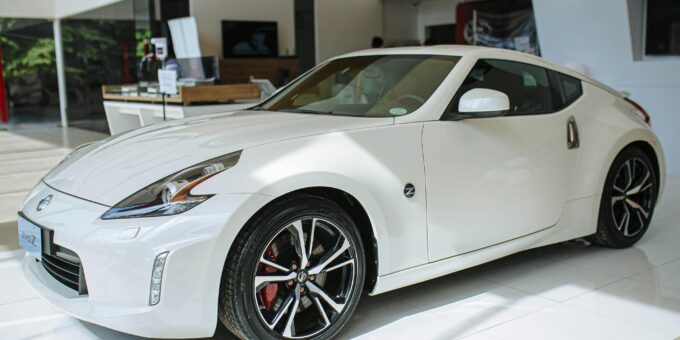
Car manufacturers are constantly updating their models with cutting-edge technology, advanced safety features, and new comfort upgrades. If you’re in the market for a new car, understanding the latest features in new car variants can help you make a more informed decision and ensure you’re getting the best value for your investment.
From advanced infotainment systems to revolutionary safety technologies, staying informed about what’s trending in new car variants will give you an edge in your search. This guide will show you how to find the latest features, where to look, and what to prioritize when evaluating new car variants.
Why Do New Car Variants Keep Updating?
Automakers release updated car variants each year or with mid-generation refreshes to:
- Stay Competitive: Offer better features than rivals to attract buyers.
- Meet Market Demands: Address consumer preferences, such as advanced safety or fuel efficiency.
- Incorporate New Technology: Add cutting-edge innovations to enhance performance, comfort, and convenience.
For buyers, this means you can often find the latest advancements in newer car variants, making research a critical step in the decision-making process.
Key Categories of Latest Features in Cars
Modern cars are packed with features that fall into these main categories:
- Safety: Advanced Driver Assistance Systems (ADAS), 360-degree cameras, and automatic emergency braking.
- Performance: Hybrid engines, turbocharged options, and off-road enhancements.
- Infotainment: Larger touchscreens, voice-activated controls, and smartphone integration.
- Comfort: Heated and ventilated seats, ambient lighting, and customizable interiors.
- Eco-Friendly Technology: Electric drivetrains, regenerative braking, and improved aerodynamics.
Step 1: Research Manufacturer Announcements
Stay updated on the latest car features by following manufacturers’ announcements:
- Visit automaker websites for new model releases.
- Sign up for newsletters or alerts from brands like Toyota, Ford, Tesla, and BMW.
- Watch live unveilings or press releases for model-year updates.
Example: Tesla frequently introduces software updates and new features through its website and app, so following official channels is critical.
Step 2: Use Online Car Comparison Tools
Comparison tools are a great way to explore features across car variants.
Top Platforms for Car Comparisons:
- Edmunds: Side-by-side comparisons of trims and features.
- Kelley Blue Book (KBB): Includes new feature highlights and estimated costs.
- Cars.com: Offers detailed breakdowns of features by trim level.
- CarBuzz: Includes a “What’s New” section for each car model.
Step 3: Read Expert and Industry Reviews
Professional reviews are invaluable for understanding new features and how they perform.
Where to Find Expert Reviews:
- Car and Driver: Comprehensive reviews on performance and tech.
- MotorTrend: Focuses on cutting-edge features and innovations.
- YouTube Channels: Creators like Doug DeMuro and TheStraightPipes showcase detailed walkthroughs of features.
Tip: Pay attention to comparisons between new and previous variants to see what’s improved.
Step 4: Look for Technology Trends
New car variants often include emerging tech trends such as:
- AI-Powered Systems: Voice commands, predictive navigation, and personalized driving settings.
- Augmented Reality HUDs: Displays critical driving data on the windshield.
- Over-the-Air (OTA) Updates: Regular feature enhancements via software updates (e.g., Tesla, Ford).
Step 5: Check Safety Innovations
Safety is a major focus for new car variants, with many offering advanced features like:
- ADAS (Advanced Driver Assistance Systems): Includes adaptive cruise control, lane-keeping assist, and collision warnings.
- Driver Monitoring Systems: Alerts you if it detects drowsiness or distractions.
- Automatic Emergency Braking (AEB): Prevents collisions by applying brakes automatically.
Example: Hyundai’s “SmartSense” suite includes forward collision avoidance and blind-spot monitoring, available in mid and top-tier trims.
Step 6: Evaluate Infotainment and Connectivity
New car variants increasingly emphasize technology:
- Larger Screens: Screens as large as 12–15 inches (e.g., Tesla Model Y, Ford Mustang Mach-E).
- Wireless Smartphone Integration: Apple CarPlay and Android Auto without the need for cables.
- Voice Assistance: Systems like Amazon Alexa, Google Assistant, or built-in voice commands.
Tip: Check reviews to ensure these features are user-friendly and not overly complex.
Step 7: Assess Performance Upgrades
Performance features vary widely across variants, with higher trims often offering:
- Turbocharged or Hybrid Engines: Enhanced power and fuel efficiency.
- Drive Modes: Sport, eco, and off-road modes for better adaptability.
- Suspension Systems: Adaptive or air suspensions for a smoother ride.
Step 8: Explore Comfort and Luxury Features
Modern car variants are offering more luxury features, even in mid-range trims:
- Seating: Memory functions, massage seats, and Nappa leather upholstery.
- Climate Control: Dual- or tri-zone automatic climate control.
- Ambient Lighting: Customizable interior lighting for a premium feel.
Step 9: Monitor Fuel Efficiency and EV Advancements
As sustainability becomes a priority, many new car variants focus on eco-friendly features:
- Electric Variants: Fully electric models with extended range (e.g., Tesla Model 3, Hyundai Ioniq 6).
- Plug-In Hybrids (PHEVs): Combine fuel and electric power for better mileage.
- Eco Mode Driving: Optimizes fuel efficiency by adjusting throttle and AC settings.
Step 10: Explore Manufacturer Configurators
Use official manufacturer configurators to explore and customize trims:
- Build and price different variants to see what features are included.
- Compare upgrades like engine options, tech packages, and safety bundles.
Examples:
- Toyota’s Build Tool: Lets you compare trims like LE, XLE, and Limited.
- Ford’s Configurator: Explore packages like FX4 Off-Road or Technology Add-ons.